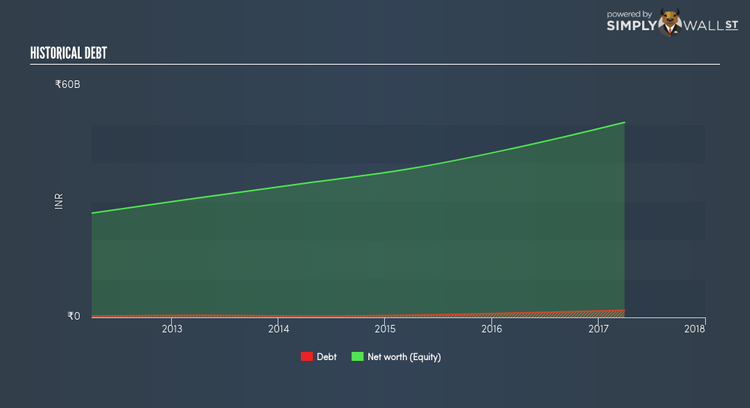All You Need To Know About Exide Industries Limited’s (NSE:EXIDEIND) Financial Health

Small-cap and large-cap companies receive a lot of attention from investors, but mid-cap stocks like Exide Industries Limited (NSEI:EXIDEIND), with a market cap of ₹202.17B, are often out of the spotlight. However, generally ignored mid-caps have historically delivered better risk adjusted returns than both of those groups. Today we will look at EXIDEIND’s financial liquidity and debt levels, which are strong indicators for whether the company can weather economic downturns or fund strategic acquisitions for future growth. Note that this information is centred entirely on financial health and is a top-level understanding, so I encourage you to look further into EXIDEIND here. See our latest analysis for Exide Industries
How does EXIDEIND’s operating cash flow stack up against its debt?
EXIDEIND has built up its total debt levels in the last twelve months, from ₹1.15B to ₹1.87B , which comprises of short- and long-term debt. With this growth in debt, EXIDEIND’s cash and short-term investments stands at ₹19.11B , ready to deploy into the business. On top of this, EXIDEIND has generated cash from operations of ₹9.99B over the same time period, resulting in an operating cash to total debt ratio of 535.01%, signalling that EXIDEIND’s debt is appropriately covered by operating cash. This ratio can also be interpreted as a measure of efficiency as an alternative to return on assets. In EXIDEIND’s case, it is able to generate 5.35x cash from its debt capital.
Can EXIDEIND meet its short-term obligations with the cash in hand?
With current liabilities at ₹26.08B, the company has maintained a safe level of current assets to meet its obligations, with the current ratio last standing at 1.85x. Usually, for Auto Components companies, this is a suitable ratio since there is a bit of a cash buffer without leaving too much capital in a low-return environment.
Does EXIDEIND face the risk of succumbing to its debt-load?
With a debt-to-equity ratio of 3.70%, EXIDEIND’s debt level is relatively low. EXIDEIND is not taking on too much debt commitment, which may be constraining for future growth. We can test if EXIDEIND’s debt levels are sustainable by measuring interest payments against earnings of a company. Ideally, earnings before interest and tax (EBIT) should cover net interest by at least three times. For EXIDEIND, the ratio of 35.04x suggests that interest is comfortably covered, which means that lenders may be inclined to lend more money to the company, as it is seen as safe in terms of payback.
Next Steps:
EXIDEIND has demonstrated its ability to generate sufficient levels of cash flow, while its debt hovers at a safe level. In addition to this, the company will be able to pay all of its upcoming liabilities from its current short-term assets. This is only a rough assessment of financial health, and I’m sure EXIDEIND has company-specific issues impacting its capital structure decisions. I suggest you continue to research Exide Industries to get a more holistic view of the stock by looking at:
Future Outlook: What are well-informed industry analysts predicting for EXIDEIND’s future growth? Take a look at our free research report of analyst consensus for EXIDEIND’s outlook.
Valuation: What is EXIDEIND worth today? Is the stock undervalued, even when its growth outlook is factored into its intrinsic value? The intrinsic value infographic in our free research report helps visualize whether EXIDEIND is currently mispriced by the market.
Other High-Performing Stocks: Are there other stocks that provide better prospects with proven track records? Explore our free list of these great stocks here.
To help readers see pass the short term volatility of the financial market, we aim to bring you a long-term focused research analysis purely driven by fundamental data. Note that our analysis does not factor in the latest price sensitive company announcements.
The author is an independent contributor and at the time of publication had no position in the stocks mentioned.

